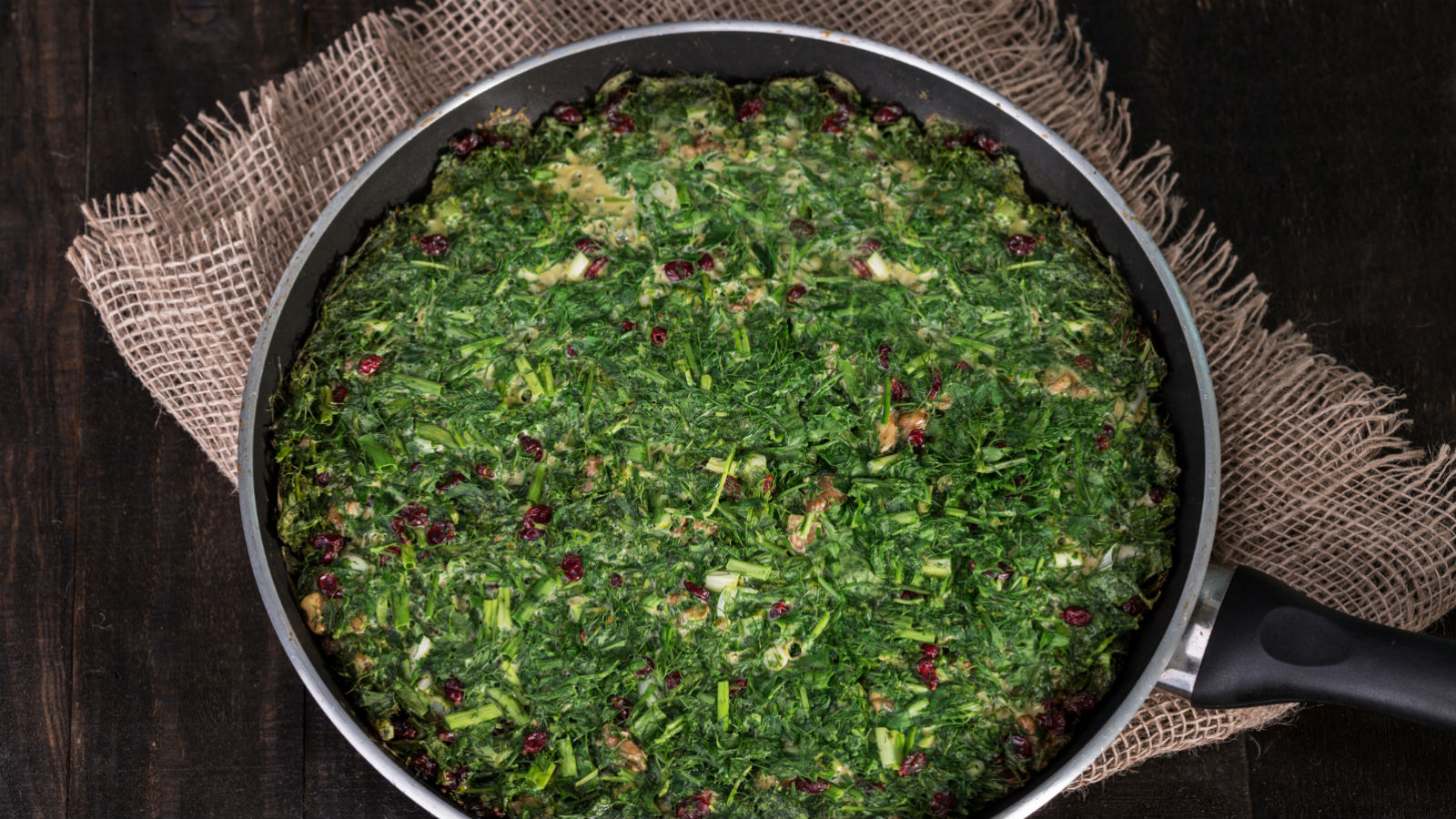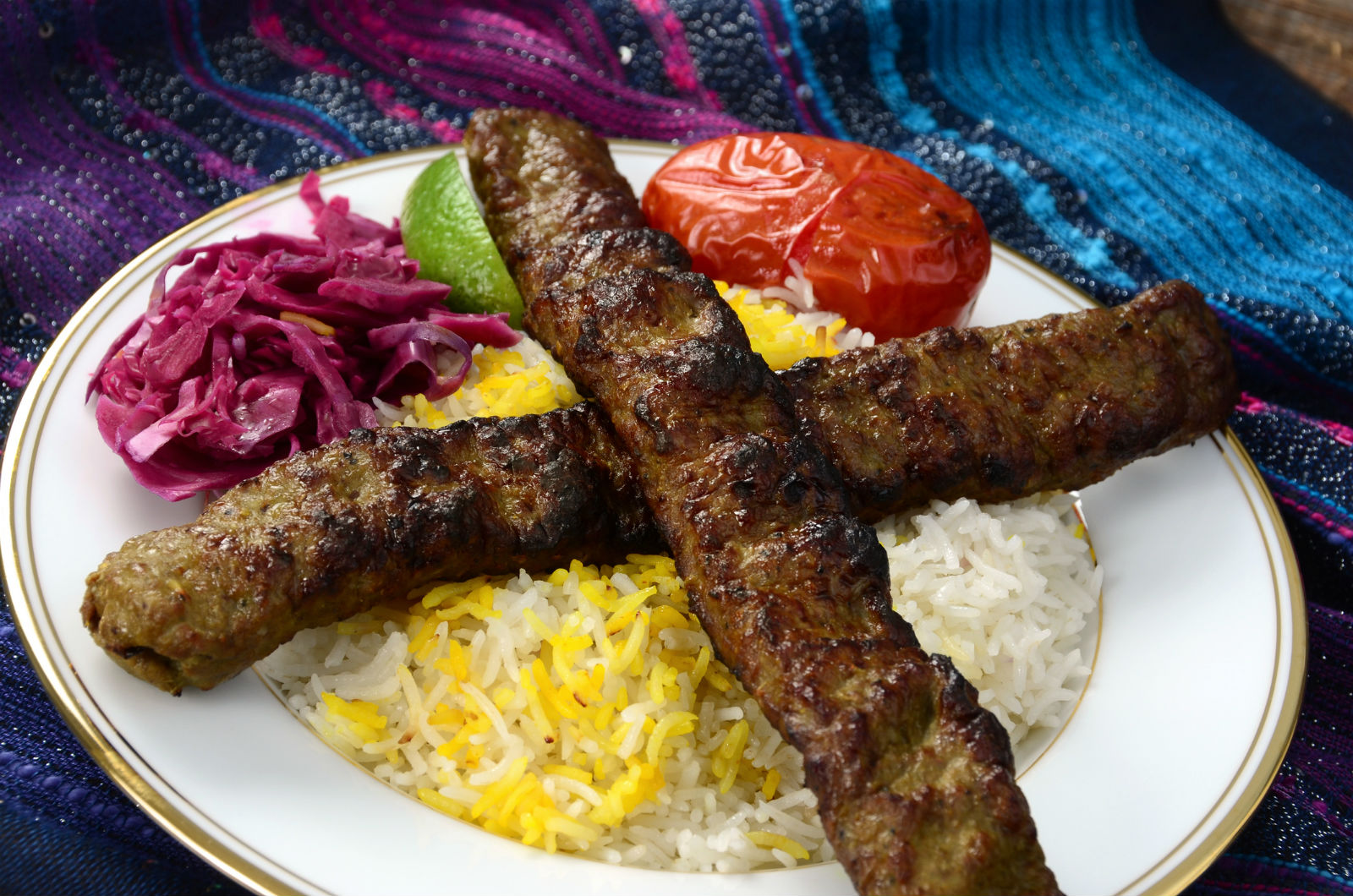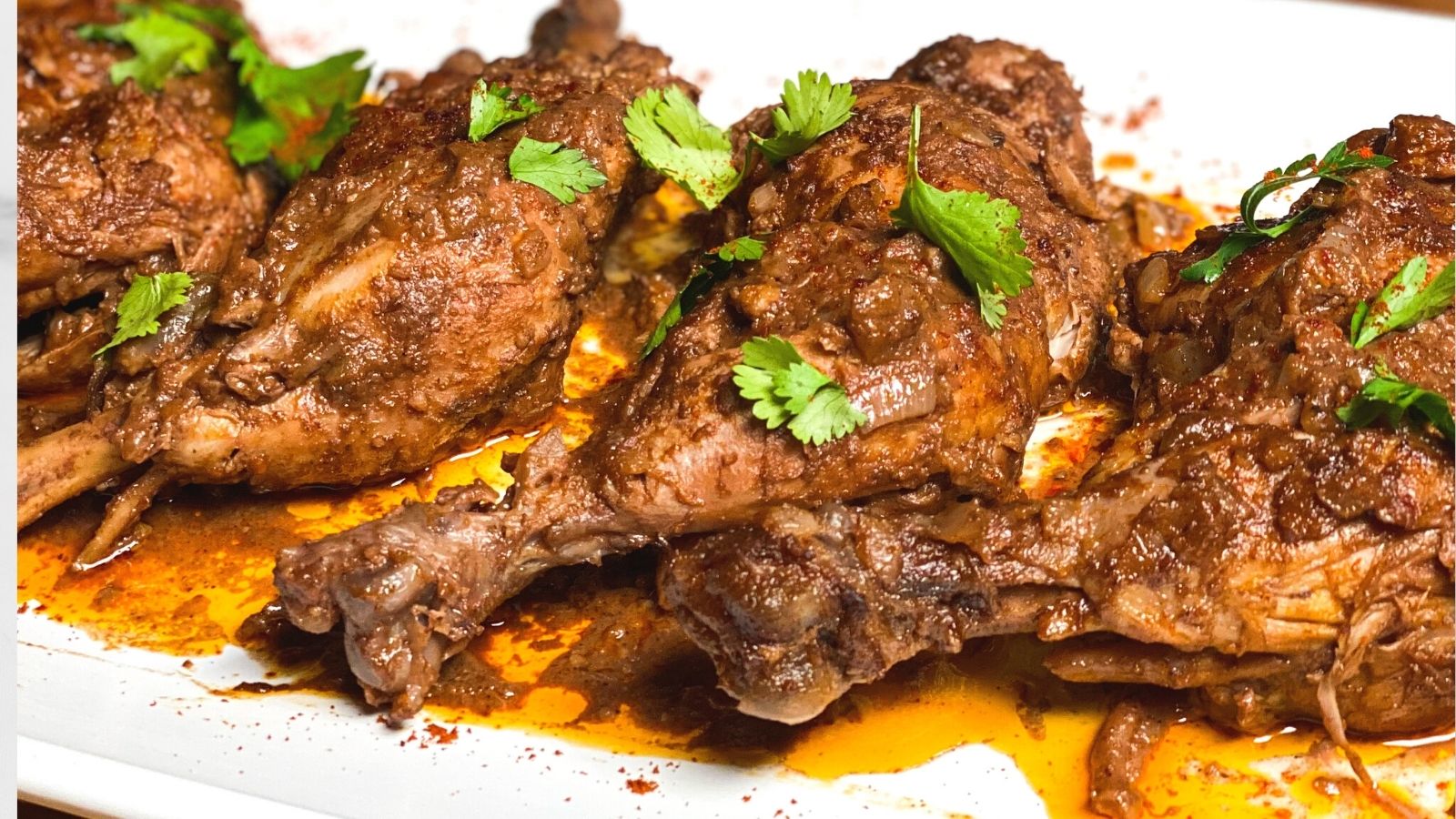The Iranian Jewish community is small but culinarily mighty — only about 2% of all of the world’s Jews are of Iranian descent, but they represent a rich cuisine featuring mountains of saffron-scented basmati rice, the addictive sweet and sour flavors that come from using fruit in savory dishes, and large quantities of fresh herbs used in every way you can imagine. Here are some essential dishes from the Persian table to savor.
1. Ghormeh Sabzi
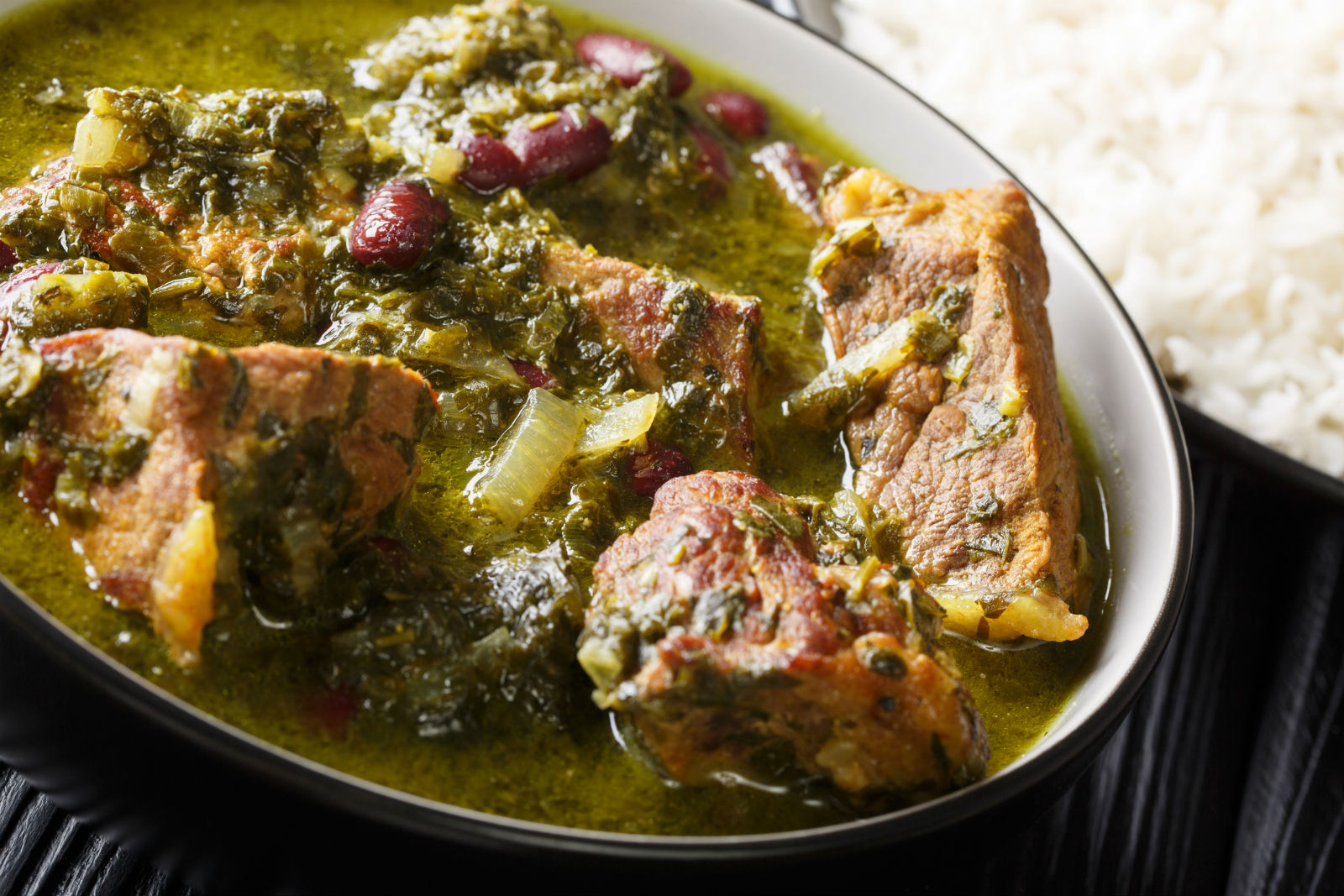
The most lauded of Iran’s khoreshs (vegetable- and fruit-heavy stews served over rice), ghormeh sabzi consists of a mix of herbs that are fried before being cooked slow and low with chunks of lamb or beef, kidney beans and dried limes, which lend an earthy pungency to the herby flavor of the dish. “Sabzi” is the Persian word for greens or herbs, and this is one of many dishes that highlight the Iranian obsession with sabzi.
2. Chelo Abgooshte Gondi
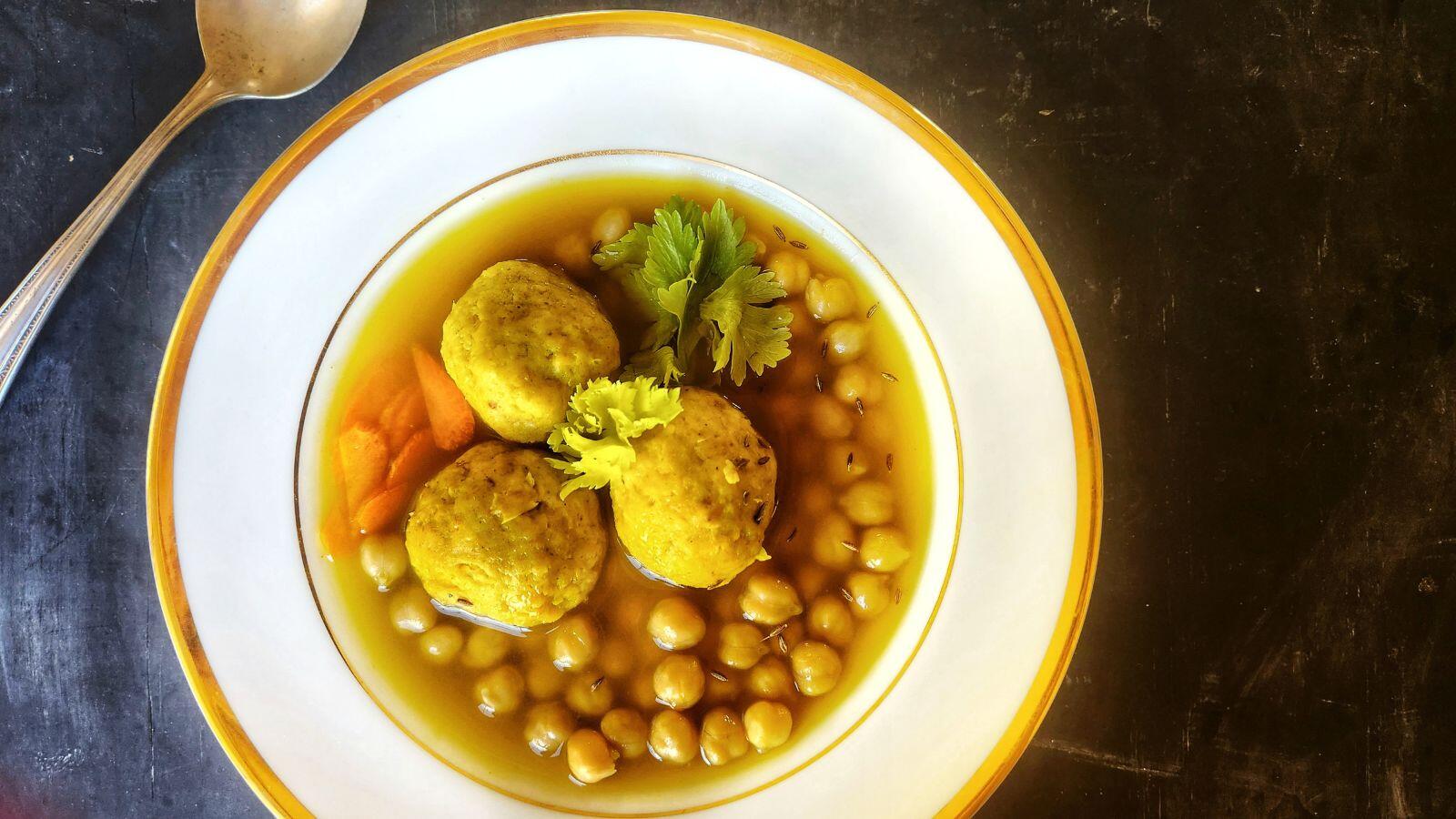
The quintessential Shabbat dinner for Jews from much of Iran, chelo abgooshte gondi is a chicken soup with chickpeas and the namesake gondi: dumplings made from ground chicken or turkey, chickpea flour, chopped onions and a heady mix of cardamom and turmeric. There is no better way to close out the week than by tucking a piece of warm gondi and a sprig of fresh basil or tarragon into a square of lavash bread, and enjoying it with a glass of your favorite spirit.
3. Chelo Kabob
The national dish of Iran consists of succulent skewers of grilled meat served alongside fluffy basmati rice. The kabobs can vary from juicy pieces of marinated chicken, on or off the bone, to tender beef or lamb filet, or koobideh — seasoned ground beef shaped by hand around flat metal skewers. The accompanying rice is unflavored, but you can dress it up by smushing the ubiquitous grilled tomato on your plate into an ad-hoc sauce or adding a sprinkle of ground sumac. Some even mix a raw egg yolk into the rice for added richness.
The Nosher celebrates the traditions and recipes that have brought Jews together for centuries. Donate today to keep The Nosher's stories and recipes accessible to all.
4. Fesenjan
This khoresh spotlights the Iranian inclination to use fruit in savory dishes. Fesenjan is a stew of ground walnuts, pomegranate molasses, and fall-off-the-bone chicken or duck that’s served over basmati rice. Its unique flavor profile typifies the Iranian love for sweet and sour flavors. Many recipes add sugar to the dish to balance the tartness of the pomegranate, but Jewish households typically use dates as a sweetener instead.
5. Kuku Sabzi
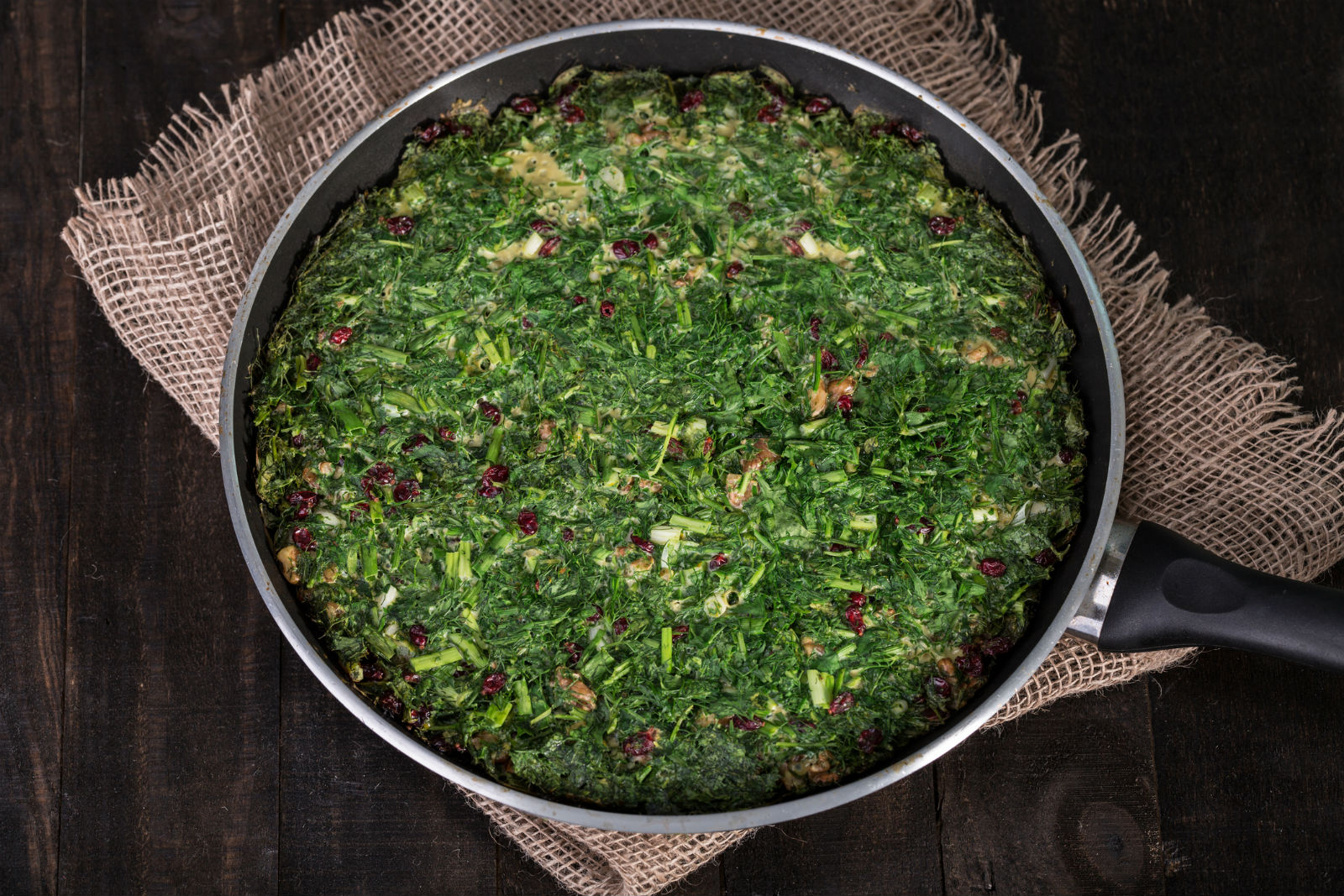
Sabzi (fresh herbs) make another appearance in this herb frittata that is an elegant addition to any Persian lunch spread. The ratio of herbs to eggs is strikingly high, but the result is a deep green color and a light, fluffy texture. Often eaten around Nowruz – the Persian New Year, Jewish families also serve kuku sabzi during a yahrtzeit (anniversary of a death).
6. Tahdig
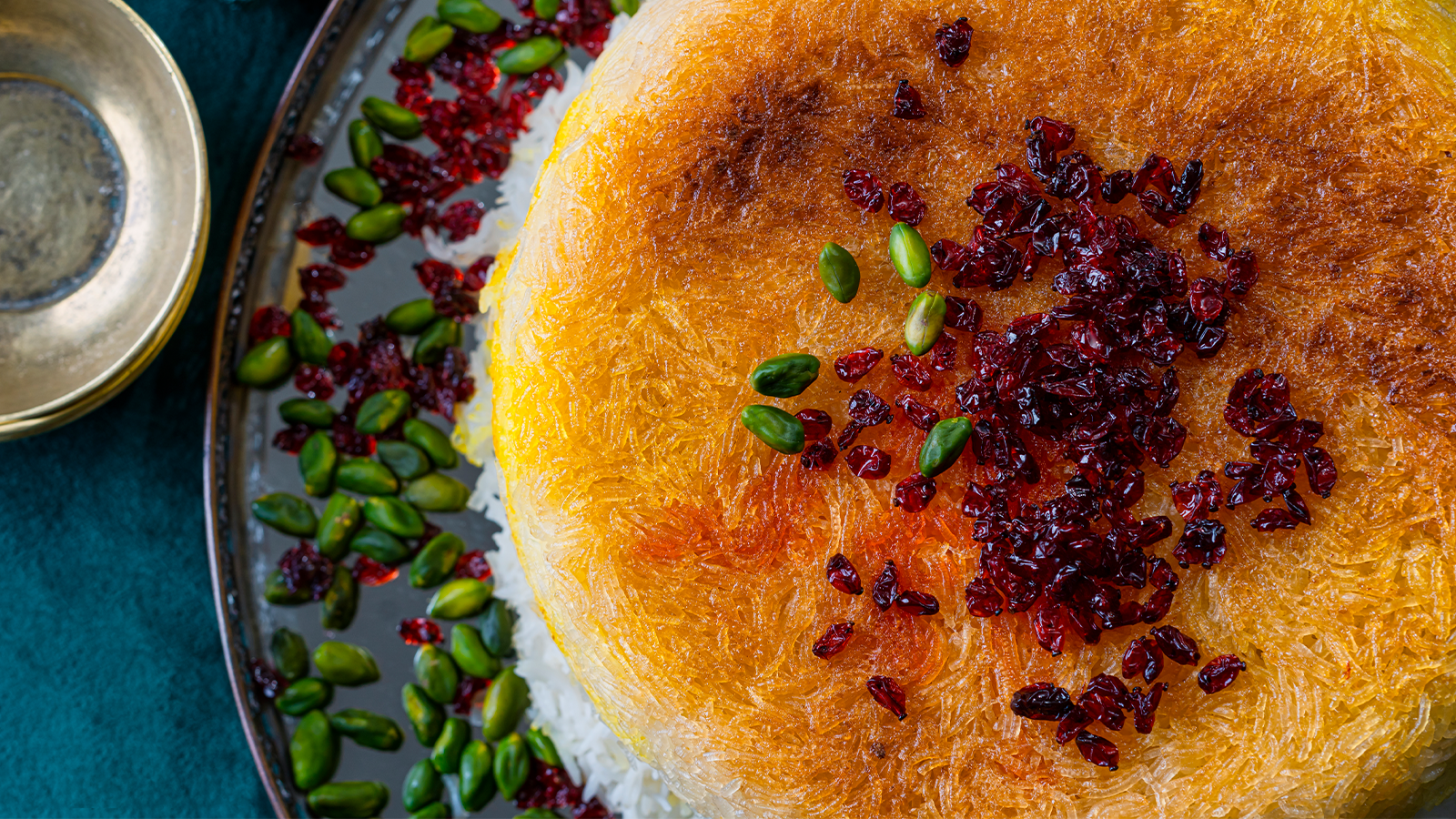
Iranian cooks are meticulous about rice: great pains are taken to make sure that every grain is elongated and unbroken, devoid of any mushiness or stickiness. First, you soak the grains in saltwater, then parboil the rice before draining, rinsing, and setting it up for a long steam. And at the bottom of every pot of Persian rice, whether plain white chelo or an adorned polo, is the real prize: tahdig – a thick crust of golden crispy rice, redolent of saffron, either brought to the table in pieces or inverted onto the serving dish in a single perfect disc, sure to be the centerpiece of the table. Some people add thin slices of potato or flatbread like lavash to their tahdig, but nothing beats classic rice tahdig.
7. Morasa Polo ( aka Jeweled Rice)
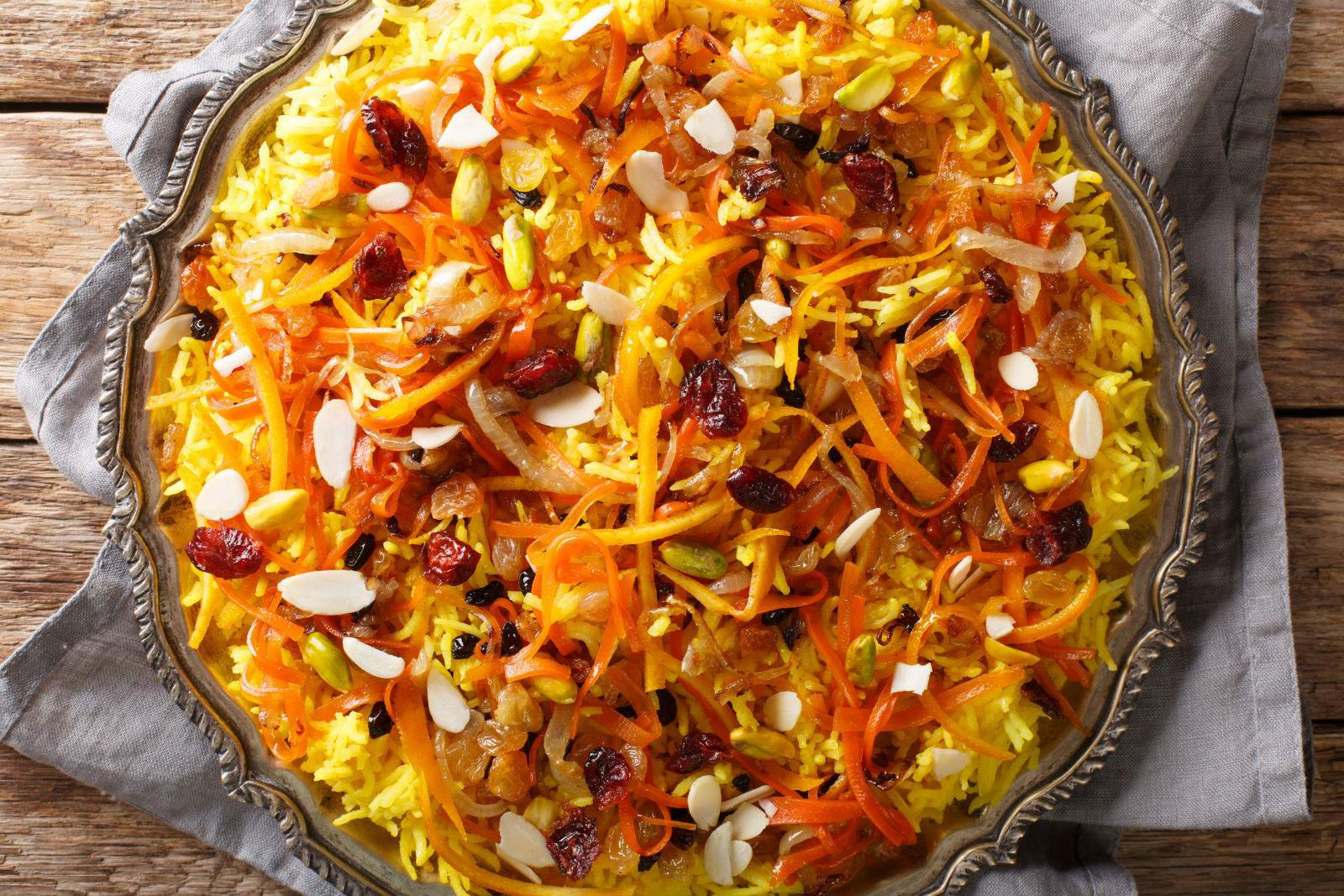
This dish may be the most beautiful of Iran’s polos – dishes of steamed basmati rice mixed with various combinations of fruits, nuts, vegetables and herbs. It’s a sweet dish, ornately decorated with a mix of orange peel, barberries and slivered pistachios. With its sweet flavors and impressive aesthetics, jeweled rice is most often featured at Persian weddings.
8. Aashe Reshteh
Aash is Iran’s typical soup: never watery, aashes are thick, hearty soups that can consist of grains such as barley or rice, tangy fruit like pomegranate, prunes or unripe grapes, leafy greens and herbs, and sometimes meat. Aashe reshteh is the most popular. Loaded with a variety of legumes, starchy wheat noodles and, of course, lots of greens, this aash is garnished with saffron caramelized onions, mint oil and a fermented dairy condiment called kashk. You’ll never miss the meat — ashe reshteh is nourishing, warming, and totally satisfying.
